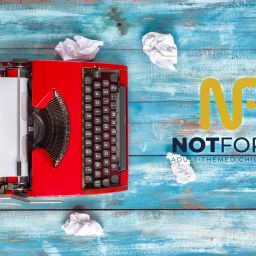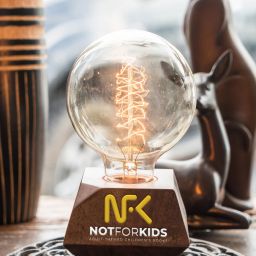
Article 13: Drafting the Story
Every great book starts with a concept, but turning that concept into a compelling story takes work—and a little creativity. After giving it much thought, the invention of the light bulb idea, I’ve decided to name it A Bright Ass Idea!. I think that resonates with the story being an adult-themed children’s book (Not for Kids book)—let me know what you think!
In the case of A Bright Ass Idea, the process of drafting the narrative relied on a combination of brainstorming techniques, humor, and clever structure. In article 13 of Using AI to Publish a Book, I’ll break down how this irreverent and satirical take on the invention of the light bulb came to life, using the tools we’ve discussed, like Story Arcs and Mind Maps, to craft a narrative that’s as engaging as it is laugh-out-loud funny.
Building the Foundation with a Mind Map
Before the first sentence of A Bright Ass Idea was written, a Mind Map was created to explore key themes, characters, and events. The central idea was “The Invention of the Light Bulb,” with branches for major elements such as:
- Life Before Electric Lighting: Candles, oil lamps, and the inconveniences of living in near-constant darkness.
- Early Experiments: Humphry Davy’s work with platinum filaments and the efforts of other inventors.
- Challenges Faced: Materials that burned out too quickly or were too expensive.
- Thomas Edison: His role as both a genius and a savvy (if ruthless) businessman.
- Rivalries: The competition between Edison and Joseph Swan.
- The Breakthrough: The bamboo filament and the collaboration that led to Ediswan.
This step helped to organize ideas, identify the most entertaining points to focus on, and build a roadmap for the story. I conducted my research as best as I could using sites like the U.S. Department of Energy, Wikipedia, Bulbs.com, Sciencing, and from an article in the Smithsonian Magazine.
Structuring the Narrative with a Story Arc
A Story Arc was then applied to give the narrative its flow. While A Bright Ass Idea is nonfiction, the emotional ups and downs of the inventors’ journey align perfectly with the “Man in a Hole” Arc:
- The Fall: The struggles and failures of early inventors like Davy and the challenges of finding the right filament.
- The Climb: Edison’s relentless experiments, the trials of his team, and the eventual breakthrough with bamboo.
- The Victory: The successful light bulb and the merging of Edison’s and Swan’s companies.
This arc provides a framework to guide readers through the story’s highs and lows, creating a sense of progression and resolution.
Tone & Voice: Adding Personality with Humor – The Story
I wanted the tone of A Bright Ass Idea to set it apart. Similar to how Sh*t, I Need a Job! was written, the use of humor, irreverent language, and bold characterizations turned what could be a dry historical account into an engaging and modern adult-themed children’s book. Drafting lines like “It was dark as hell, and people were constantly tripping over crap in the dark” sets the stage for a hopeful entertaining narrative.
Below is the story created during last week’s work with Mind Maps and use of a Story Arc. I contemplated making the story rhyme like the first Not for Kids adult-themed children’s book, but for the sake of drafting a story in one week, I opted not to for this book. Check out the story below:
⚠️ WARNING: Explicit Content – Parental Advisory in Effect:
Once upon a time, way back in the olden days, everything was lit by fucking candles and smelly shitty oil lamps.
Can you imagine that?
It was dark as hell, and people were constantly tripping over crap in the dark.
Then, along came these smart-ass scientists who were messing around with electricity.
==============================
One of these dudes, named Humphry Davy, figured out that if you hooked a thin piece of platinum up to a battery, it would glow really bright.
But here’s the catch: platinum was fucking expensive, so nobody could afford to light their house with it.
Over the next few decades, a whole bunch of jackasses tried to make a better light bulb.
==============================
Some tried using carbon, which was cheaper than platinum, but burned out pretty quickly.
Others tried filling the bulbs with different gases, hoping to make the filament last longer.
These guys were all pretty damn smart, but none of them could quite crack the code.
==============================
Now, let’s talk about this motherfucker named Thomas Edison.
You’ve probably heard of him, right?
Well, he wasn’t exactly the saint history makes him out to be.
==============================
He was a cunning bastard, always trying to screw over his competitors.
But, gotta give him credit, he was also a damn good inventor.
Edison and his team of misfits, known as the “muckers”, spent years experimenting with different materials for the filament.
==============================
They tried everything from wood shavings to coconut hair before finally settling on bamboo, which turned out to be the shit.
To get the best bamboo, Edison sent his guys all over the damn world, from Brazil to China.
One poor son-of-a-bitch even died of yellow fever in Cuba while searching for the perfect bamboo.
==============================
Edison eventually got his lightbulb to work, but it wasn’t just because he was a genius.
He had a kick-ass team of scientists and engineers who helped him figure out the details.
He also knew how to play the media like a damn fiddle.
==============================
Edison was constantly hyping up his inventions, even before they were finished, just to fuck with his rivals.
But Edison wasn’t the only smartass working on the lightbulb.
In England, this guy named Joseph Swan had already developed a working lightbulb using a cellulose filament.
==============================
Swan was lighting up houses and theaters in England while Edison was still fucking around with bamboo.
Eventually, these two sons-of-bitches realized they were better off working together than fighting each other.
They merged their companies to form the Edison & Swan United Electric Light Company, or “Ediswan” for short.
==============================
And that, kids, is the fucked-up story of the lightbulb.
It wasn’t invented by a single genius in a flash of brilliance.
It was the result of decades of hard work, experimentation, and a whole lot of cursing by a bunch of smart-ass inventors who were all trying to out-fuck each other.
Key Narrative Highlights
1. Life Before the Light Bulb
The story opens with a vivid (and hilariously blunt) description of the pre-electricity era: candles, oil lamps, and constant frustration. This sets the stage for why the invention of the light bulb was so revolutionary.
2. Early Efforts and Failures
Characters like Humphry Davy are introduced as pioneers who laid the groundwork but couldn’t quite solve the problem. Their failures create a sense of tension and anticipation, paving the way for Edison’s arrival.
3. The Edison Era
Edison is presented as a complicated figure—both brilliant and cunning. His experiments, the global search for bamboo, and his knack for self-promotion highlight the effort and ingenuity behind his success.
4. The Rivalry and Collaboration
The rivalry between Edison and Swan adds conflict to the story, while their eventual collaboration provides resolution and reinforces the theme of teamwork.
Lessons from the Drafting Process
The drafting of A Bright Ass Idea! demonstrates how structure and creativity can work hand in hand:
- Mind Maps keep the brainstorming process organized, ensuring that no key ideas are overlooked.
- Story Arcs provide a narrative framework, guiding readers through the story’s progression.
- Tone and Voice make the story memorable and engaging, turning historical facts into a relatable journey.
By combining these techniques, the story becomes more than just a recounting of events—it becomes a compelling, entertaining narrative that readers can connect with.
Your Turn: Apply These Techniques to Your Story
Whether you’re writing a children’s book, a memoir, or a satirical Not for Kids tale like A Bright Ass Idea!, these tools can help you craft a story that resonates:
- Start with a Mind Map to explore your ideas.
- Use a Story Arc to structure the flow of your narrative.
- Don’t be afraid to inject personality and humor into your writing—it’s what makes your voice unique.
The goal isn’t just to tell a story but to create an experience that readers won’t forget.
What’s Next?
In the next article, we’ll take the narrative structure of A Bright Ass Idea! and explore how to integrate royalty-free artwork into the story. From selecting images to editing and enhancing them to match the tone, I’ll walk you through the beginning process of turning words into a fully illustrated book.
Have you tried using Mind Maps or Story Arcs in your writing? I’d love to hear about your experiences—drop a comment and let’s discuss!



